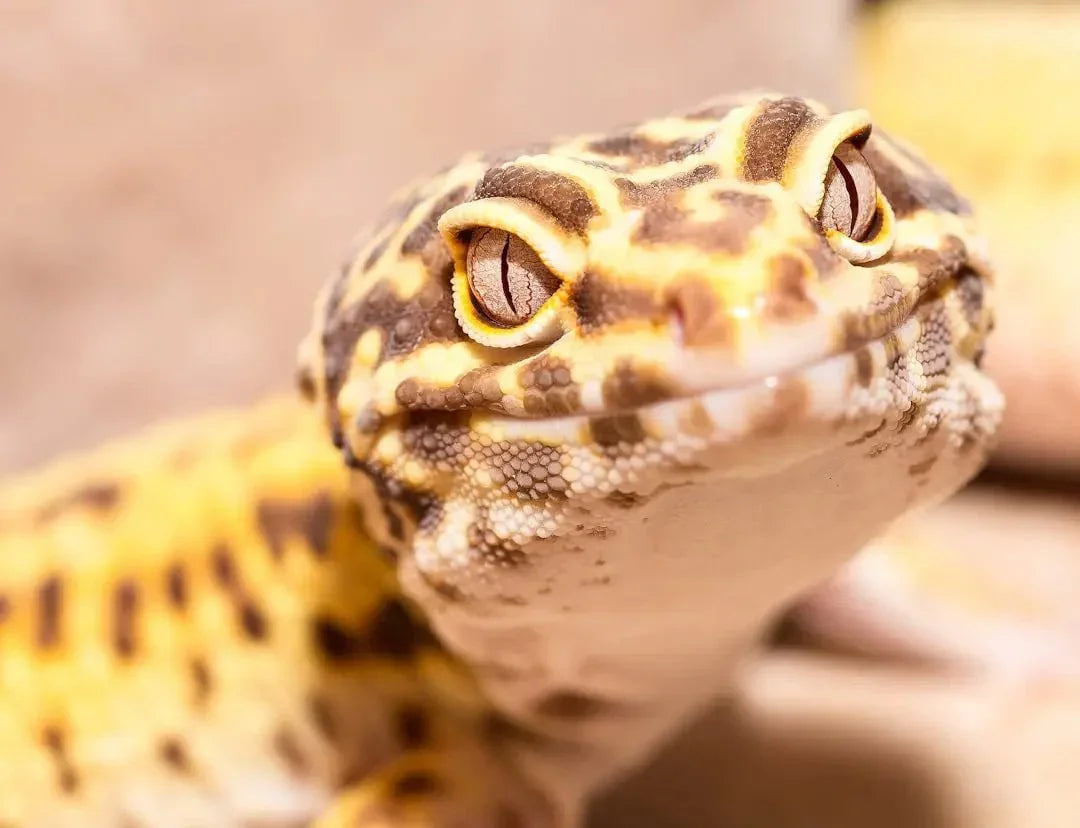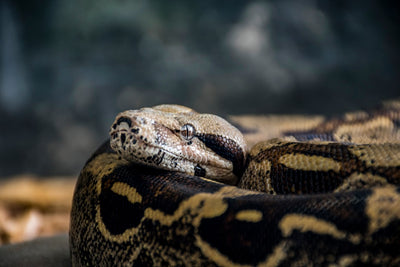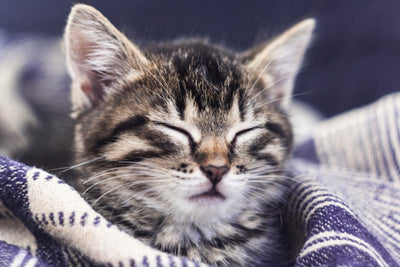
Custom Reptile Habitat Solutions for Optimal Care
Introduction
Designing and maintaining a custom Reptile Habitat is a task that many reptile enthusiasts approach with both passion and precision. For owners of exotic and native reptiles alike, creating an enclosure that mimics natural environments not only enhances aesthetic appeal but also improves the reptile’s well-being, behavior, and overall health. Poor design can lead to stress, improper temperature regulation, and illness, making even slight oversights potentially dangerous.
This article provides an in‐depth guide for creating custom reptile habitats that ensure optimal care. By understanding species-specific requirements, researching appropriate materials and environmental conditions, and integrating advanced control systems, reptile owners can design an enclosure that supports natural behavior and robust health. Topics include assessing space and growth, determining temperature gradients, establishing humidity levels, selecting substrates, and more. The guide covers everything from initial research and design to construction and ongoing maintenance, ensuring that even newcomers to reptile care can successfully build and manage a thriving habitat.
The reader will gain clarity on key factors in habitat design, benefit from actionable lists and tables, and find answers to frequently asked questions in the final section.
Key Takeaways
- Learn how to research species-specific reptile needs and the benefits of a custom habitat.
- Discover practical steps to design, build, and maintain enclosures with optimal temperature, humidity, and space.
- Access detailed lists and tables of essential components, safety steps, and maintenance tips.
- Understand how custom solutions reduce stress and promote natural reptile behavior.
Understanding Your Reptile's Specific Needs for a Custom Habitat
Understanding your reptile’s unique requirements is critical for replicating its natural habitat. Each species exhibits distinct behaviors, dietary needs, and environmental preferences that must be considered from the start.
Researching Species-Specific Reptile Habitat Requirements
Begin by identifying the native environment, natural substrates, ambient temperature, humidity ranges, and light exposure typical for the species. For example, studies show that species such as bearded dragons and green iguanas require different thermal and humidity conditions to support metabolism and immune function. Owners should consult academic sources, experts, and community forums for cross-referenced data. Detailed research also helps ensure that factors like basking spots, UVB exposure, and hiding places closely mimic natural settings, reducing risks of metabolic bone disease and respiratory infections.
Assessing Space and Growth Considerations for Your Reptile
Reptiles need space to grow and move freely. For juvenile reptiles, design an enclosure that accommodates future growth, considering adult size and movement patterns. Some species need vertical space for climbing, while others benefit from open ground areas. Ensuring ample space prevents stress-related behaviors such as aggression or lethargy.
Identifying Unique Behavioral Traits Impacting Habitat Design
Different reptiles display distinct behaviors – from burrowing and basking to climbing and territoriality. Behavioral traits such as nocturnal or crepuscular activity determine the type of lighting and temperature gradients required. Recognizing these traits aids in arranging components like water features, live plants, and branches that provide stimulation and encourage natural feeding behaviors while reducing stress.
Determining Correct Temperature Gradients for Your Reptile's Habitat
Temperature gradients are vital for digestion and immune function. Studies highlight that a combination of warm basking spots and cooler resting zones allows effective thermoregulation. Using thermostat-regulated heat lamps and distinct temperature zones ensures that conditions align with the reptile’s natural rhythms. Overheating or overly cool areas may force the reptile to expend extra energy to maintain body temperature, resulting in long-term health issues.
Establishing Appropriate Humidity Levels Within the Reptile Habitat
Humidity affects skin health, shedding, and overall comfort. Many species, like certain geckos and snakes, require optimal humidity to avoid dehydration or respiratory infections. Owners can use hygrometers along with misting systems, water features, or moisture-retaining substrates to adjust levels. Consistent humidity—particularly during molting—is crucial to prevent problems like incomplete shedding.
Designing Your Ideal Custom Reptile Habitat

Designing an ideal reptile habitat involves blending functional design with aesthetic appeal. The layout must support the reptile’s physiological needs while fitting naturally within the owner’s living space to promote natural behavior and optimal living conditions.
Sketching a Functional Layout for Your Custom Reptile Habitat
Begin with a scaled floor plan that allocates space for temperature zones, basking areas, hideouts, water access, feeding areas, and climbing structures. Incorporate placements for heat sources, lighting, and ventilation systems so that each area is logically interconnected and safe. Ensure measurements align with recommended dimensions (often referred to as “reptile habitats 4x2x2”) to provide even small species with sufficient spread. A thoughtful layout reduces structural errors and simplifies routine maintenance.
Selecting Safe and Durable Materials for a Reptile Habitat
Choose materials that are non-toxic, durable, and resistant to moisture and heat fluctuations. Popular choices include high-grade acrylic, marine-grade plywood sealed with reptile-safe sealants, and glass for observation panels. Materials must be free from chemicals that could leach toxins, and they should be easy to clean and disinfect, ensuring long-term safety and structural integrity.
Incorporating Naturalistic Features Into Your Reptile Habitat Design
A custom reptile habitat should function as a replica of the reptile's natural environment. Naturalistic features, such as rock formations, live or artificial plants, and logs, enhance visual appeal and stimulate natural behaviors. Research indicates that such enclosures reduce stress, as features like rock caves and crevices provide essential hiding spots, while live plants help improve air quality.
Planning for Easy Access and Maintenance of the Reptile Habitat
Ease of access for cleaning and routine inspections is vital. Incorporate removable panels, sliding doors, or modular structures to facilitate quick access for cleaning, substrate replacement, and health checks. Designing a maintenance-friendly habitat minimizes disruption and saves time, helping keep the environment hygienic and safe.
Integrating Environmental Control Systems in Custom Reptile Habitats
Modern habitats benefit from automated systems that regulate temperature, humidity, and lighting. Programmable thermostats, humidifiers, and UVB light timers, paired with sensors and real-time feedback, help maintain optimal conditions with minimal human error. These systems can even simulate seasonal changes, ensuring consistent enclosure conditions.
Essential Components for a Thriving Reptile Habitat
A thriving reptile habitat incorporates essential components that work together to support health and natural behavior. Below are the key elements and their roles.
Choosing Suitable Substrate for Your Reptile Habitat Floor
A high-quality, non-toxic substrate is the foundation of the habitat. Options such as coconut fiber, cypress mulch, or reptile-safe sand can control moisture, provide insulation, and mimic natural digging surfaces. Proper layering ensures drainage and reduces skin issues, promoting healthy shedding.
Implementing Effective Heating Systems in the Reptile Habitat
An effective heating system is essential for reptiles, which rely on external heat. A combination of heat lamps, ceramic heat emitters, and under-tank heaters creates distinct thermal gradients for basking and resting. Thermostats prevent overheating and ensure rapid recovery from temperature changes, supporting digestion and metabolic function.
Arranging Proper Lighting Solutions to Support Reptile Health
Proper lighting, especially full-spectrum UVB, is critical for calcium synthesis and bone health. A balanced lighting setup that also includes low-intensity red lights at night maintains natural circadian rhythms. Safe installation and regular monitoring of light intensity and spectrum are key to preventing conditions like metabolic bone disease.
Ensuring Adequate Ventilation Throughout the Reptile Enclosure
Good airflow is fundamental to prevent humidity buildup and stagnant air that could lead to respiratory infections and fungal growth. Natural ventilation via vents and mesh panels, supplemented by mechanical fans if needed, helps maintain balanced temperatures and oxygen circulation.
Adding Hiding Spots, Climbing Structures, and Enrichment to the Reptile Habitat
Behavioral enrichment is achieved through multiple hiding spots and climbing structures. Using reptile caves, branches, and rock formations encourages natural behaviors such as basking, hiding, and climbing. Enrichment accessories like shallow water dishes, feeding trays, and textured surfaces further stimulate exploration and contribute to physical and mental well-being.
Building or Acquiring Your Custom Reptile Enclosure

Whether you build your own custom reptile enclosure or hire professionals, careful planning is essential to meet all of your reptile’s needs. This section outlines a step-by-step process for planning, constructing, and evaluating the enclosure.
Step-by-Step Guide to DIY Custom Reptile Habitat Construction
A DIY approach begins with a detailed blueprint that considers thermal zones, spatial dimensions, and material choices. Source high-quality, non-toxic materials such as marine-grade plywood, UV-resistant acrylic panels, and reptile-safe sealants. Use appropriate tools and follow safety protocols during assembly. Testing temperature stability and humidity levels before introducing your reptile is critical, and a DIY project also offers opportunities for personalization and future modifications.
Locating Professional Builders for Custom Reptile Habitats
For those less inclined to DIY, professional builders offer expertise in custom habitat design. Look for reputable professionals through referrals, online reviews, or reptile enthusiast communities. Professionals integrate advanced control systems and precision-engineered materials to ensure long-term durability, and many offer post-installation support and warranties.
Modifying Pre-Existing Enclosures to Suit Custom Reptile Habitat Needs
Existing enclosures can often be modified to better meet current needs. Upgrades may include improved insulation, rearranged substrate layers for better drainage, enhanced heating distribution, upgraded lighting systems, or additional ventilation. This approach can extend the life of older structures while aligning them with modern reptile care guidelines.
Performing Safety Inspections on New Reptile Habitat Setups
After construction or modification, conduct thorough safety inspections. Check electrical wiring, ventilation panels, and structural connections for hazards such as sharp edges or loose fittings. Using tools like thermometers, hygrometers, and electrical testers helps ensure that the habitat is safe and well-maintained.
Budgeting for Your Custom Reptile Habitat Solution
Budgeting involves estimating upfront costs for materials and labor as well as ongoing expenses for maintenance and replacements. DIY projects may save on labor but require quality materials, while professional services might offer package deals or financing options. A detailed budget ensures that the habitat is safe, aesthetically pleasing, and economically sustainable over time.
Essential Components for a Thriving Reptile Habitat (Detailed List)
Below is a detailed list of components essential for a thriving reptile habitat. Each item supports environmental stability, natural behavior, and overall health.
Suitable Substrate – Foundation for Health and Behavior A non-toxic substrate like coconut fiber or cypress mulch controls moisture, supports insulation, and mimics natural digging surfaces, reducing skin issues and aiding shedding.
Effective Heating System – Thermoregulation and Metabolic Support Heat lamps, ceramic heat emitters, and under-tank heaters create thermal gradients that support digestion and metabolism. A thermostat ensures temperatures remain stable.
Proper Lighting Solutions – UVB Exposure and Circadian Rhythm Full-spectrum UVB lighting supports calcium synthesis and bone health, while controlled lighting maintains natural circadian rhythms and prevents metabolic bone disease.
Adequate Ventilation – Air Quality and Humidity Control Vents, mesh panels, and mechanical fans work together to circulate fresh air, prevent mold growth, and maintain balanced temperatures.
Environmental Control Systems – Automation and Stability Automated systems with sensors adjust temperature, humidity, and lighting, ensuring optimal, consistent conditions with minimal human error.
Hiding Spots and Climbing Structures – Behavioral Enrichment Reptile caves, branches, and rock formations provide safe hideaways and encourage natural physical activity, reducing stress and promoting exercise.
Enrichment Accessories – Dynamic and Adaptive Environment Accessories such as shallow water dishes, misting systems, and decorative elements support sensory stimulation, feeding behaviors, and overall well-being.
Table: Essential Components for a Thriving Reptile Habitat
Below is a summary table of key components along with their functions, benefits, and key considerations.
| Component | Function | Benefit | Key Consideration |
|---|---|---|---|
| Suitable Substrate | Foundation for behavior and moisture | Promotes healthy skin shedding | Non-toxic; proper moisture retention |
| Effective Heating System | Maintains temperature gradient | Supports digestion and metabolism | Thermostat-regulated for safety |
| Proper Lighting Solutions | Provides UVB and maintains circadian rhythm | Enhances bone development | Full-spectrum UVB required |
| Adequate Ventilation | Ensures air circulation | Prevents respiratory issues and mold | Balanced airflow essential |
| Environmental Control System | Automates climate control | Maintains consistent habitat conditions | Remote monitoring capability |
| Hiding Spots & Climbing Structures | Offers behavioral enrichment | Reduces stress; improves exercise | Secure and natural arrangement |
| Enrichment Accessories | Enhances sensory and natural behaviors | Stimulates exploration and feeding | Easily modifiable and dynamic |
| Additional Safety Features | Prevents hazards in structure | Ensures long-term enclosure integrity | Regular inspections and upgrades |
Building or Acquiring Your Custom Reptile Enclosure – Detailed List
Choose the method that best fits your skills, budget, and needs:
DIY Custom Construction – Personalization and Cost-Effectiveness Build your enclosure from scratch for complete customization and control over updates and repairs.
Professional Builder Engagement – Expertise and Precision Hire professionals who use advanced systems and durable materials, often with post-installation support.
Modifying Existing Enclosures – Adaptability and Upgrading Upgrade an existing setup by adjusting insulation, lighting, heating, or ventilation to meet current standards.
Pre-Fabricated Enclosure Purchase – Convenience and Consistency Purchase a standard enclosure that can later be enhanced with additional accessories and controls.
Hybrid Construction Methods – Combining DIY with Professional Input Use a pre-fabricated base and personalize it further with DIY modifications for a balanced approach.
Modular Enclosure Systems – Scalability and Future-Proofing Opt for a flexible system that can be expanded as the reptile grows or as new features are needed.
Consultation and Custom Design Services – Comprehensive Planning Work directly with experts for a fully tailored enclosure designed from scratch based on your reptile’s specific needs.
Table: Comparison of Enclosure Acquisition Methods
Below is a detailed comparison of different acquisition approaches.
| Method | Cost | Customization Level | Required Expertise | Longevity & Safety | Time to Construct | Flexibility | Notable Benefit |
|---|---|---|---|---|---|---|---|
| DIY Custom Construction | Low to Moderate | Very High | High | High with regular care | Long | Highly flexible | Complete ownership and control |
| Professional Builder Engagement | High | Very High | Minimal | Very High | Medium | Moderately flexible | Expert integration of technology |
| Modifying Existing Enclosures | Low | Moderate | Medium | Moderate | Medium | Flexible | Reusing existing investment |
| Pre-Fabricated Purchase | Moderate | Low to Moderate | Low | High (standardized) | Short | Limited | Immediate usability |
| Hybrid Construction | Low to Moderate | High | Medium | High | Medium | Flexible | Balanced cost and customization |
| Modular Enclosure Systems | Moderate | High | Medium | High | Medium | Very flexible | Scalability and adaptability |
| Custom Design Services | High | Very High | Minimal | Very High | Long | Flexible | Fully tailored to species needs |
Maintaining Your Custom Reptile Habitat for Sustained Well-Being
Regular maintenance is essential to keep your custom habitat in optimal condition.
Creating a Consistent Cleaning Routine for the Reptile Habitat
Develop a cleaning schedule that includes daily spot cleaning, weekly deep cleaning of substrates and water dishes, and monthly equipment inspections. Use reptile-safe cleaning agents and detailed checklists to prevent bacterial buildup and reduce stress.
Regularly Monitoring and Adjusting Reptile Habitat Conditions
Install digital sensors and automated systems to continuously monitor temperature, humidity, and lighting. Keep detailed logs to track changes over time and adjust settings with seasonal shifts to maintain optimal conditions.
Inspecting the Reptile Habitat for Potential Hazards or Damage
Periodically inspect wiring, joints, and fixtures for wear, loose fittings, or other hazards. Regular safety inspections using tools such as thermometers and hygrometers help ensure that the enclosure remains secure and functional.
Modifying the Reptile Habitat to Accommodate Your Reptile's Development
As your reptile grows, adjust the enclosure by enlarging space, adding climbing structures, or updating heating and lighting systems. A well-documented schedule makes these modifications smoother and reduces stress during transitions.
Addressing Common Problems in Reptile Habitat Management
Develop a troubleshooting guide for issues such as substrate compaction, equipment malfunction, or inadequate environmental control. Regular recalibration and prompt part replacement help maintain stability and preempt health issues.
Advantages of Opting for Custom Reptile Habitat Solutions

Custom habitats offer several key advantages over generic enclosures:
Encouraging Natural Instincts with a Tailored Habitat Custom solutions replicate natural environments, promoting behaviors like basking, burrowing, and climbing, which reduce stress and enhance overall health.
Bolstering Physical Condition through Superior Design Optimal heating, lighting, and substrate configurations improve digestion, metabolism, and immune responses, leading to fewer veterinary visits.
Minimizing Stress with a Secure, Well-Suited Habitat Matching the reptile’s native conditions lowers chronic stress and disease risk, making the animal more comfortable and active.
Improving Visual Appeal with a Bespoke Enclosure Custom-built habitats can integrate with your home décor, creating a visually pleasing centerpiece that enhances both form and function.
Realizing Enduring Value through Quality Construction Durable materials and integrated systems reduce ongoing maintenance costs, ensuring long-term savings and a higher quality of life for your reptile.
Table: Advantages of Custom Reptile Habitat Solutions
Below is a comprehensive table summarizing these advantages.
| Advantage | Benefit Description | Impact on Reptile Health | Owner Satisfaction | Longevity | Aesthetic Improvement | Cost-Effectiveness |
|---|---|---|---|---|---|---|
| Encouraging Natural Instincts | Mimics natural environment and behaviors | Reduced stress; better feeding | Higher breeding success | Long-lasting | Enhances natural look | Moderate to high |
| Bolstering Physical Condition | Optimized heating, lighting, and substrate | Improved metabolism and immunity | Fewer vet visits | Durable | Professionally designed | Cost-saving over time |
| Minimizing Stress | Environment tailored to species needs | Lower disease susceptibility | Enhanced interaction | Stable | Visually pleasing | Improved overall value |
| Improving Visual Appeal | Custom design integrates with home décor | Indirect psychological benefits | Personal pride | Timeless | High artistic value | Variable with investment |
| Realizing Enduring Worth | Quality materials with low maintenance | Sustained ideal conditions | High confidence | Extended | Custom finishes available | Economical in long run |
| Scalability and Flexibility | Ability to modify as reptile grows | Adaptable to development | Ease of future changes | Future-proof | Custom modules can match | Expense balanced over time |
| Integrated Environmental Controls | Automated systems for stable conditions | Consistent health indicators | Reduced management | Reliable | Modern and sleek design | Energy efficient |
Maintaining Your Custom Reptile Habitat for Sustained Well-Being – Detailed List

Establish a Regular Cleaning Schedule – Consistent Hygiene Daily, weekly, and monthly routines with spot cleanings, deep cleans, and equipment sanitization reduce pathogen buildup and support overall stability.
Install Environmental Monitoring Equipment – Continuous Data Tracking Digital sensors provide real-time data, enabling prompt adjustments and minimizing risks from environmental fluctuations.
Conduct Periodic Safety Inspections – Preemptive Hazard Identification Regular checks for loose fittings, damaged wiring, or structural wear help prevent accidents and extend the habitat’s lifespan.
Schedule Routine Maintenance – Ongoing System Checks Consistent checks and timely replacement of worn components prevent system failures and ensure continuous optimal performance.
Document Changes and Improvements – Tracking Habitat Evolution Detailed records of environmental parameters and modifications help identify patterns and inform future improvements.
Address Equipment Failures Promptly – Rapid Response Strategies Quick resolution of equipment failures with backup systems and spare parts minimizes instability and protects your reptile’s health.
Adjust Environmental Settings for Seasonal Variations – Dynamic Optimization Modify heating, lighting, and ventilation settings during seasonal changes to maintain a balanced, comfortable environment.
Frequently Asked Questions
Q: What factors should I consider when designing a custom reptile habitat? A: Consider species-specific requirements such as temperature gradients, humidity levels, substrate type, and natural enrichment features. Also, plan for safety, ease of maintenance, and future growth. Consult expert advice to match the reptile’s native conditions.
Q: How can I ensure proper temperature regulation in my reptile enclosure? A: Implement effective heating systems like heat lamps and under-tank heaters with thermostats to create temperature gradients. Regular monitoring with digital sensors secures optimal conditions.
Q: What are the benefits of a custom reptile habitat compared to a pre-fabricated one? A: Custom habitats provide complete personalization, advanced environmental controls, superior materials, and tailored enrichment features, leading to improved health and longevity despite a higher initial cost.
Q: How do I maintain optimal humidity levels in my reptile enclosure? A: Use digital hygrometers along with misting systems or substrate adjustments to retain moisture. Regular cleaning and ventilation inspections help keep humidity levels stable, preventing respiratory and skin issues.
Q: Can I build my own custom reptile habitat at home, and what safety precautions should I take? A: Yes. Ensure the use of non-toxic, durable materials, proper wiring for heating elements, secure lighting installation, and regular safety inspections. Follow detailed blueprints and consult experts to keep risks minimal.
Q: What role do enrichment features play in a reptile habitat? A: Enrichment features like hiding spots and climbing structures mimic the natural environment, promote natural behaviors, reduce stress, encourage exercise, and enhance both physical and mental health.
Q: How frequently should environmental control systems be serviced in a custom reptile habitat? A: These systems should be checked monthly, including sensor calibration and equipment inspections, to ensure that temperature, humidity, and light levels remain optimal.
Final Thoughts
Custom reptile habitat solutions provide an unparalleled level of care for reptiles. By tailoring every component—from substrate and heating to lighting and enrichment—owners create a secure, dynamic environment that meets each species' specific needs. The design, construction, and maintenance strategies outlined in this guide not only promote optimal reptile health but also yield a visually appealing and easy-to-manage enclosure. Forward-thinking reptile owners can use these insights to continuously enhance their custom setups, ensuring longevity and overall well-being for their reptiles.






